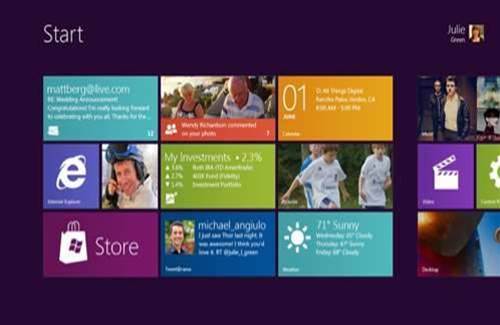Users of the Windows UI (formerly 'Metro') in Windows 8 will only be able to access Flash content that has been whitelisted by Microsoft, according to technical advisories.

Developers noted that Metro would not support Flash after previewing Windows 8 tablets at Microsoft's BUILD conference last year.
An advisory by video hosting service Brightcove confirmed last week that Windows 8 would ship with two versions of Internet Explorer - one for the desktop and one for the tiled Windows UI.
Blogger rabid gremlin first reported the advisory, which states: "The default browser experience in the Windows UI does not allow Flash unless the site has been approved and granted access by Microsoft.
"In the desktop version of Internet Explorer, Flash is available for all sites and there is no need to get whitelisted."
The advisory points to developer advice issued by Microsoft, which confirms that "only sites that are on the Compatibility View (CV) list for Flash can play Flash content within Internet Explorer 10 in the new Windows UI".
Compatibility view was introduced in 2008 to display sites that were optimised to run in older versions of Internet Explorer.
"We place sites with Flash content on the CV list if doing so delivers the best user experience in Internet Explorer 10 with those sites," Microsoft stated.
"For example, how responsive is the content to touch? Does it work well with the onscreen keyboard, or affect battery life? Do visual prompts comply with the Windows Store app user experience guidelines?
"Sites that rely on capabilities (for example, rollover events and peer-to-peer (P2P) functionality) that are not supported within Windows UX [user experience] guidelines for Windows Store apps, and don't degrade gracefully in their absence, are better off running in Internet Explorer 10 for the desktop with Flash."
If a website was not whitelisted to work in Windows UI, web developers could mark pages "with a META tag indicating that the site requires a plug-in".
Windows 8 would then prompt the user to open the page in the desktop version of Internet Explorer, where no Flash restrictions exist.
Apple has refused to support Flash on its mobile devices since the iPhone's 2007 release. Adobe stopped developing Flash for mobile last year to focus on HTML5 and Adobe Air.



_(22).jpg&h=140&w=231&c=1&s=0)
_(20).jpg&h=140&w=231&c=1&s=0)




_(26).jpg&w=100&c=1&s=0)

 iTnews Executive Retreat - Security Leaders Edition
iTnews Executive Retreat - Security Leaders Edition












_(1).jpg&h=140&w=231&c=1&s=0)



